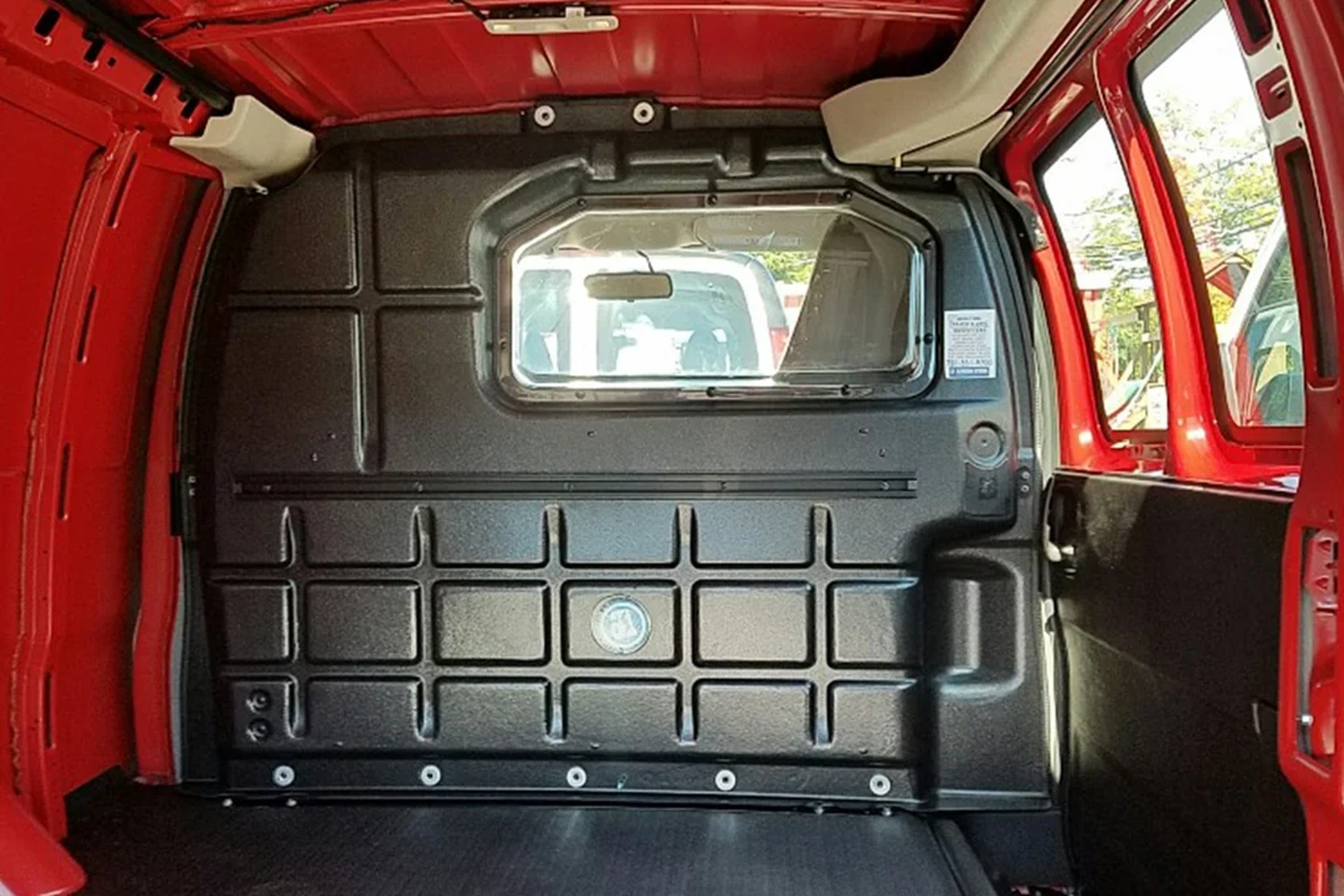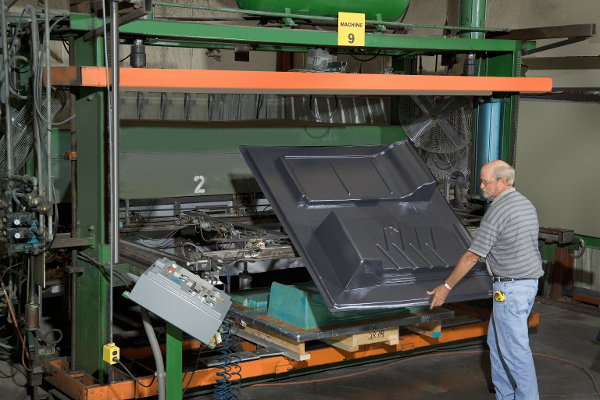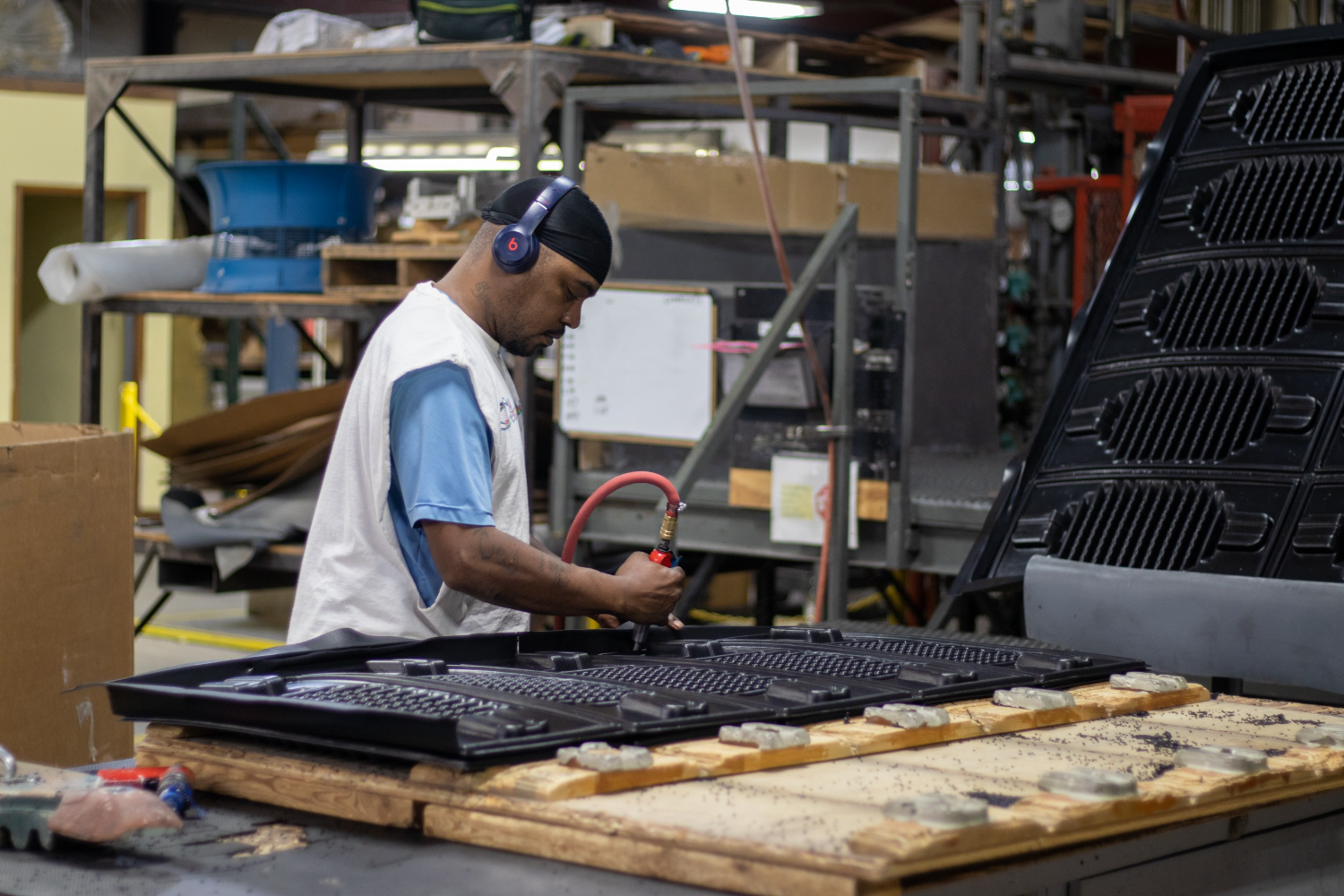Thermoforming is a versatile manufacturing process that allows manufacturers to mold thin and heavy-gauge materials. PCI's focus is heavy-gauge thermoforming, so we will focus this article on the materials used to produce these types of parts.
While thermoforming can be performed with different plastic materials, heavy-gauge thermoforming requires robust and durable materials that can withstand the demands of larger parts.
Some of the commonly used materials in heavy-gauge thermoforming:
1. ABS (Acrylonitrile Butadiene Styrene)
ABS is a widely used thermoplastic known for its toughness, impact resistance, and dimensional stability. It is often used in heavy-gauge thermoforming due to its strength and durability. ABS is commonly found in automotive interiors, protective equipment, and consumer goods applications.
2. HDPE & HMWPE (High-Density & High Molecular Weight Polyethylene)
HDPE & HMWPE are popular choices for heavy-gauge thermoforming due to their high strength-to-density ratio and resistance to impact. It is a versatile material with excellent chemical resistance and low moisture absorption properties. Heavy-duty containers, industrial components, and outdoor furniture are examples of products that often utilize HDPE or HMWPE.
3. HIPS (High Impact Polystyrene)
HIPS is a cost-effective material used in heavy-gauge thermoforming. It offers good impact strength, rigidity, and dimensional stability. HIPS is commonly employed in packaging, signage, appliance parts, and display applications. Its ease of processing and ability to achieve intricate designs make it suitable for various industries.
4. PVC (Polyvinyl Chloride)
PVC is a versatile material known for its excellent chemical resistance and flame retardancy. It is commonly used in heavy gauge thermoforming applications that require resistance to harsh environments or fire safety compliance. PVC finds application in industries such as electronics, construction, mass transit, and healthcare.
5. PC (Polycarbonate)
Polycarbonate is a transparent thermoplastic with exceptional impact resistance and heat resistance. It is commonly used in heavy gauge thermoforming applications requiring high clarity and durability. Polycarbonate is utilized in automotive, aerospace, and medical devices.
6. PETG (Polyethylene Terephthalate Glycol)
PETG is a transparent material that offers excellent clarity, impact resistance, and ease of processing. It is widely used in heavy gauge thermoforming applications such as point-of-purchase displays, medical packaging, and food containers. PETG provides a balance between affordability, durability, and aesthetic appeal.
7. TPO (Thermoplastic Olefins)
TPO is a semi-rigid material that mixes polypropylene, elastomers, and fillers. TPO is UV resistant, handles high impact throughout a wide temperature range, and works well with paints and adhesives. It is commonly used in the automotive, heavy equipment, and recreational vehicle industries.
8. TPR (Thermoplastic Rubber)
TPR is a flexible material that mixes TPO and rubber, giving it extreme flexibility, scuff protection, and traction. It is commonly used for floor and cargo mats in the transportation and agriculture industries.
Heavy gauge thermoforming requires materials that can withstand the demands of large parts while offering durability, impact resistance, and dimensional stability. The selection of materials depends on specific application requirements, such as chemical resistance, transparency, and flame retardancy.
Beyond the straight homogeneous materials, multilayer coextrusions and/or blended materials offer more versatility and customization depending on customer preference, including UV resistance, heat deflection, impact, and surface finish. PC/ABS, ABS/PVC, and Acrylic coated ABS are some of the most common options.
ABS, HDPE & HMWPE, HIPS, PVC, PC, PETG, TPO, and TPR are commonly used materials in heavy gauge thermoforming, each with unique properties and benefits. By understanding the characteristics of these materials, manufacturers can choose the most suitable option for their specific applications, ensuring the production of high-quality and robust thermoformed products.
Plastic Components, Inc. is a premier provider of quality thermoformed components for customers in various industries. In addition to our thermoforming capabilities, we provide product design assistance and tooling design, engineering, and building services to help ensure customers receive product solutions that fully meet their needs.
Contact us to learn more about our thermoforming capabilities, or partner with us on your next project.




